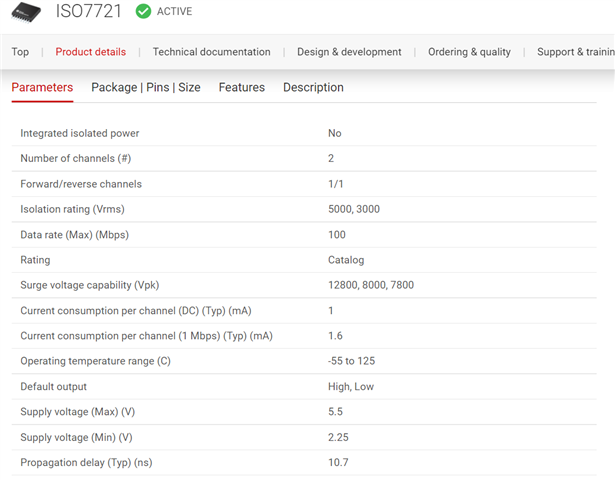Other Parts Discussed in Thread: ISO7721,
Hello,
I have a back-to-basic question. I wonder the basic difference between I2C isolator devices and Digital isolator devices. I'm comparing ISO1640 and ISO7721. ISO1640 is a bidirectional 2 channel device while ISO7721 is one forward/reverse channel each. Also it looks ISO7721 supports higher surge voltage capability.
Other than these kind of structural difference, I wonder the functional difference. I checked both devices has different data rate spec, but if the data rate condition meets, I believe ISO7721 can be also used on I2C bus, and ISO1640 can be also used on the normal signal lines. Then, what would be a benefit over ISO7721 when I use ISO1640 in I2C bus? What is a benefit over ISO1640 when I use ISO7721 for the normal signal line?


Thank you for your advice.

